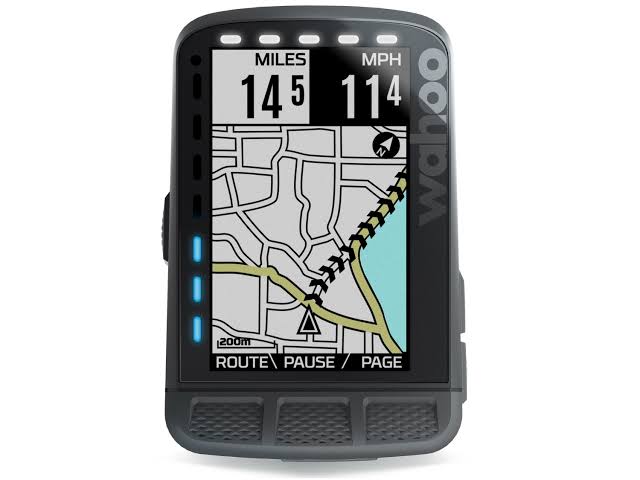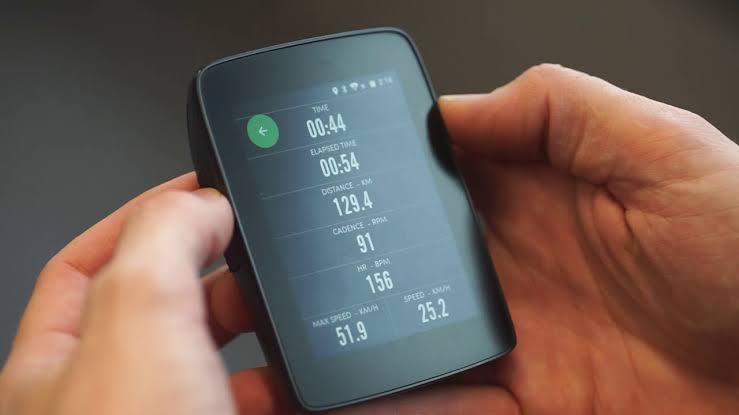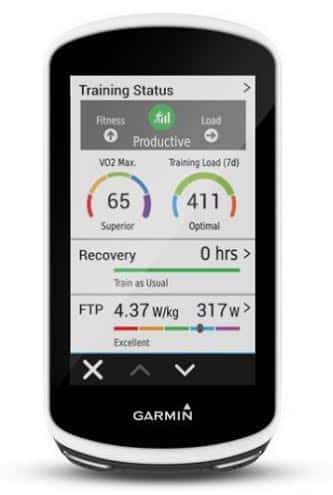A GPS Cycling Computer is a reasonable solution to the navigation problems that you might be faced with when on bikepacking or touring adventures, you need some kind of direction. You could rely on your smart phone which is more then capable at dealing with navigation. But one of the main reasons why most bikepackers opt for a stand alone GPS is because they want to save the battery life of their phone for other tasks.
And if you are using your phone all day for navigation, your battery will run out very quickly. But one of the main factors when choosing a Cycling Computer is the battery life to. This is why some people don’t like the idea of a cycling computer saying things like, just another device to charge and all that stuff. But if you choose the right GPS, you can get one that has great battery life.
Now your battery life issue and lack of enough battery life maybe answered with the likes of a Dynamo Hub as a external charge and source of power. this completely eliminates any worry with running out of battery. And having that in mind, that is why I have included some GPS cycling computers in this article that have average to below battery life performances at like 12 hours (which is not great), considering some of the options allow for up to 40 hours+.
GPS vs Smart Phone
But why not just use a smartphone then? Some older phones use cell towers to triangulate your position because they lack the actual GPS chip for satellite reception. If that’s the case with your phone, then when you are out of cell service range, your phone mapping wont work properly.
However, most smart phones have the GPS chip and are usually better because they use both the satellites and cell to “lock in” faster. This also allows them to have more updated maps that you can load “on the fly”. But if you are wanting to save as much battery life on your phone as possible for communicating to the outside world, then a GPS is sounds like a reasonable idea.
It is important to note that almost all the GPS Cycling Computers out there have some kind of issue. Wahoos have bad elevation readings, will generally drop 500-1k feet from a recording, often have recording errors and will lose data. While Garmins with touch screens can be troublesome to work with at times. For the money I would say, probably a Garmin Edge is a safe bet, but a Wahoo isn’t necessarily worse.
Wahoo Elemnt Roam

One of the problems I have had some some other navigation devices is when I would accidentally miss a turn they would struggle to re-navigate and suggest an alternative route. But with the Roam its smart navigation features allow for on-device navigation including “Back on Track” re-routing which will get you to your destination even if you veer off course. These are wonderful devices, when connected to Kommot turn by turn, they are fast and very reliable. It is a first by Wahoo to have a color screen. Combined with a crystal-clear 2.7″ Gorilla Glass display. It makes for easy viewing. It also includes an ambient light sensor, so the screen backlight and LED lights will automatically adjust based on lighting conditions both indoors and outdoors. This Wahoo has a battery life of up to 17 hours before you need to recharge. It is USB rechargeable, weighs only 3.3 ounces or 93.6 grams. Screen resolution is 240×400 and a display size of 2.7″. Finally it comes with a waterproof rating of up to 5 ft. Priced at $380
If you are a Strava junky don’t worry because you can link to any app you use. When you have finished your ride it downloads it wirelessly to your phone. Set up is super easy through the Wahoo Element fitness app. When riding in the rain and on rough terrain it still holds up very well. The auto pause feature may be a issue. When you are riding on tech terrain at a pace slower than 3mph it will pause itself then may take 30 seconds to resume. So as someone who would be using this for bikepacking it is a better idea to turn auto pause off. Also the mount is very sturdy. The app has some problems, and it has a extremely limited storage capacity. Some users have mentioned not being able to download a map the size of a country like France or Germany. this could be a issue if you are planning a around the world tour. You would have to update the maps periodically.
Lezyne Mega XL

I was first introduced to Lezyne with some of their bikepacking bags. But little did I know that they have a GPS Cycling Computer, the Mega XL. It has a large, 2.7-inch 240×400 high-resolution screen with the option of vertical or horizontal viewing. You get the option to simultaneously pair with Bluetooth Smart or ANT+™ enabled power meters, heart rate monitors and speed/cadence sensors, in addition to compatible electronic drivetrains. When paired with an iOS or Android handheld through the free Lezyne Ally V2 app, the device provides turn-by-turn navigation and phone notifications (incoming calls, texts and message app notifications). It has on-screen preloaded maps, provides turn-by-turn navigation, off-line navigation and can be instantly customized. Live tracking (Lezyne Track) can be activated in the app to let friends and family follow rides in real-time.
One of the attractive features of this device is the battery life. If you are a bike traveller who needs the most battery life out of your devices without stopping to charge them. Then this GPS will give you a generous 48 hours of battery run time. which is remarkable when compared to others, it has the best-in-class battery runtime. And all for $199.99
Hammerhead Karoo

Hammerhead’s main focus with the Karoo is to design a GPS that is classy! A sophisticated GPS navigation and real-time ride data. That allows for the connection of sensors via ANT+ or Bluetooth to track your heart rate, cadence, and power output with clear numbers or beautiful graphs.
The Karoo is made with an Android operating system, which means it is developed and continuously up-graded, together with top hardware and software experts it’s one of the most versatile and solid GPS systems for bikepacking and touring. I could not find anywhere on their site what the battery life of this device was formally, after some research I discovered that it is under 15 hours but not sure on the exact numbers. Price $249.00
Satmap Active 20

Named the essential sports GPS for any outdoor activity, it was the UK Outdoor Industry Awards winner in 2018. The Satmap Active 20, has a bright resolution display. Incredible image quality on a clear screen. Fully touchscreen and protected by a solid 2mm Gorilla Glass. Comes with a 5000mAh rechargeable battery that provides you with 16 hours of battery life.
On their sales page I believe it comes with the Quadlock system making it easy to attach it to your bike handlebars and quickly release when you need to pop into a shop. Starting from £395.00
Garmin Edge 1030

Garmin seem to focus a lot on their rider community as a sales point for their devices. They take all the data that they have from where their customers have ridden and have developed a way of using that data. Which is named the Trendline Popularity routing which uses billions of miles of Garmin Connect ride data to show you the best on- and off-road bike routes. The Rider-to-rider messaging also lets you send pre-written notes from your Edge 1030 to theirs; let your friends know if you’ll catch up in a few or if they should go on without you. This devices has great battery life and delivers up to 20 hours of power, or up to 40 hours, with the optional extended battery pack.
Smart Connectivity lets you respond to missed calls or texts with pre-written messages like “be home soon”. Smart Connectivity also lets your friends and fellow riders follow you in real time with LiveTrack and GroupTrack. Preloaded with maps and includes turn-by-turn navigation; navigation alerts notify you of an upcoming sharp turn. There has been a number of firmware bugs that came along with this device, the Garmin continue to fix. The Cycling Dynamics data derived from the sensor data is great. A little bit iffy on the recovery times it suggests, maybe not the most accurate. Live Tracking is okay but barely stays connected. The accident detection is not the best either as it does not make a noise when in a potential accident situation. It is also quiet expensive at $600 RRP but $449.99 at REI
As I asked bike travellers what GPS cycling Computers they prefer to use, most of them stated that Garmin Computers always had some kind of issue. But this could be user error and them not updating firmware when needed as the technology ages over time. They make some great stand alone GPS units but for some reason they don’t make the best cycling computers. So if I was you I would probably stand clear of Garmin. You might be okay with something like the Garmin Edge 1030, that long battery life is appealing. But other then that my recommended cycling computer especially for off the beaten path adventures would have to be the Wahoo Elemnt Roam!
Paper Map
You could just keep it old school and opt for a good old paper map. To be honest it is a skill I don’t really have! Millennial over here. But I know so many people in the bike travelling community who would much rather prefer a physical paper that they can use to navigate. Each to their own.
If I was to choose what I would recommend for a GPS for bikepacking or bike touring it would have to be the Wahoo Elemnt Roam as it is a nice looking piece of tech and it is more then capable at being that ultimate device to get you out of sticky situations.

